Climate Change Initiatives

Every Little Niche Solution Counts!
Increasing CO2 Reduction through the Power of Sensors
Much of Optex’s own CO2 emissions are generated through the use of electricity. But emissions due to our business activities are not the main issue—the electricity required to use our products after they are sold account for a large proportion of our total emissions. Therefore, while we aim to reduce emissions in our own activities, we also aim to further reduce CO2 emissions in our products and solutions by reducing their electricity consumption, extending their life cycles, and adding special functions.
There are specific products and solutions that help reduce CO2 emissions. We plan to increase the sales of those products and solutions from 17.5% in 2018 to 25% by 2025.
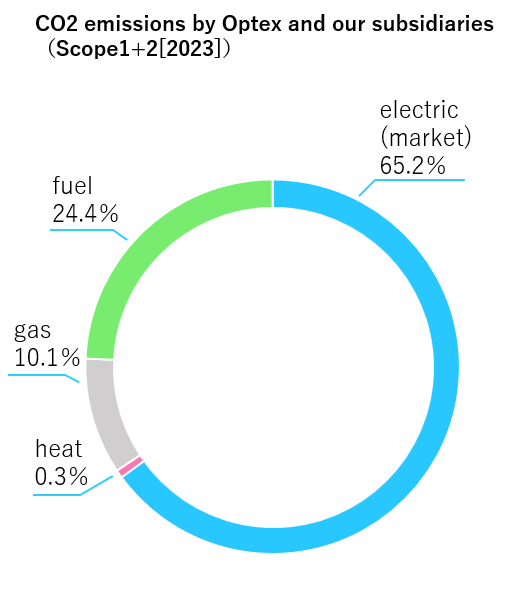
Direct greenhouse gas emissions from our own fuel use and industrial processes
Scope2
Indirect greenhouse gas emissions from the use of electricity, heat, and steam supplied by other companies
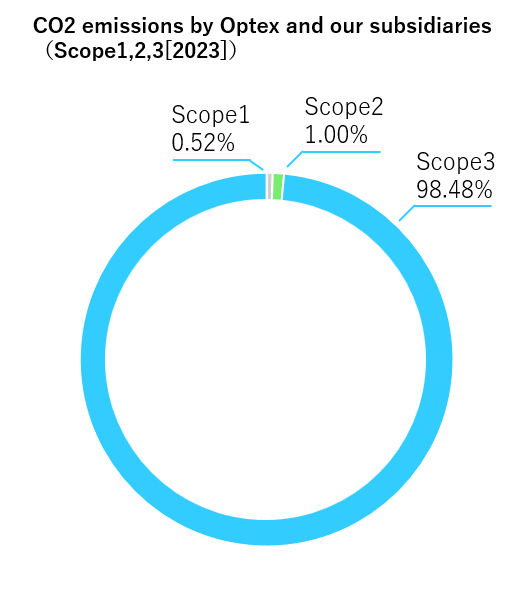
Emissions generated by others when using Optex products
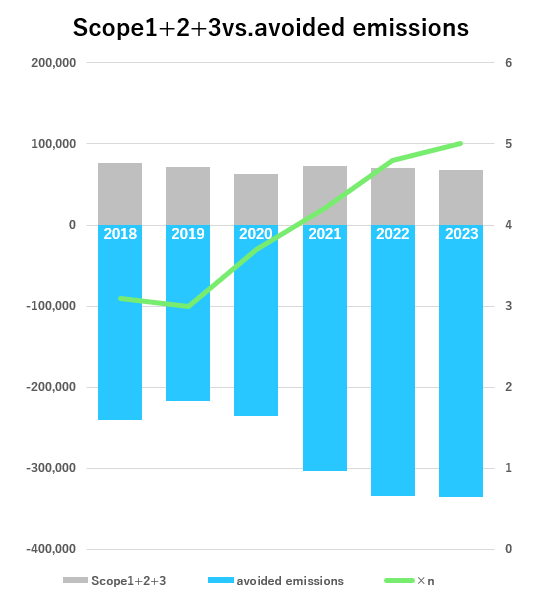
Estimated reduction in emissions due to the use of our technology and products
Niche Solution 1
Reducing CO2 emissions by avoiding opening doors unnecessarily and using sensors effectively
By using sensors effectively, you can reduce your electricity consumption.
Here, you can simulate how much CO2 emissions can be reduced by using Optex's representative products.
OPEN only to people coming toward the door!
Contribution to the environment by improving air conditioning efficiency

Infrared Automatic Door Sensor
「e-Smooth Sensor」
Reduction of unnecessary opening of shutters too!
CO2 reduction measures recommended for factories and warehouses.
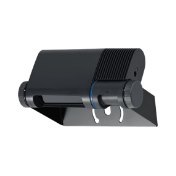
Shutter sensors
「OAM-EXPLORER」
Millions of sensors in operation, in fact!
Power-saving battery-operated outdoor security sensor
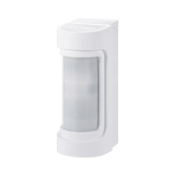
Battery-operated intrusion detection sensor
「VXS-RAM」
Solar-powered sensor light with reliability
High light output and battery efficiency!
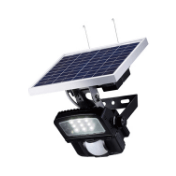
Solar-powered sensor light
「LC-2000」
■Try simulation of CO2 reduction contributions
simulator
-
 Every year,
Every year,
units
Automatic door sensors to
e-smooth sensors -
 Every year,
Every year,
units
Shutter sensors to
OAM-EXPLORER -
 Every year,
Every year,
00units
Power-supplied intrusion detection sensors to
VXS-RAM -
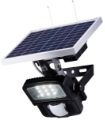 Every year,
Every year,
0units
Power-supplied outdoor lighting to
LC-2000
Simulation Results
Reduces CO2emissions0tonsover 10 years compared to current equipment
-
e-smooth sensors
-
OAM-EXPLORER
-
VXS-RAM
-
LC-2000
The CO2 conversion coefficients in the simulator are approximate values calculated based on the assumption that the product is sold in the Japan region. It does not promise any reduction effect.
How much impact does 1 ton of CO2have?

3,600km
A typical gasoline-powered car
Equivalent to run 3,600 km

20,000hours
Equivalent to use 20,000 hours of television

4,000hours
Residential air conditioner
Equivalent to 4,000 hours of use

132,000sheets
New paper (A4 size)
Equivalent to approx. 132,000 sheets
Niche Solution 2
Developing products that protect safety and security—because reducing CO2 emissions does not reduce disasters
Unfortunately, even if CO2 reduction targets are met, immediate improvements to the global climate are not guaranteed. Therefore, it is crucial to simultaneously focus on disaster prevention. Optex leverages its expertise in sensing and IoT technology to develop services and devices such as remote monitoring systems and evacuation guiding lights.
Equipment & Services to remotely manage
equipment malfunctions and disasters

Quick Monitoring Service
Solar lighting is widely used
in evacuation routes and sites

Solar-powered sensor light
「LC-2000」
Niche Solution 3
Actions Toward Increasing Renewable Energy Usage
Accelerating Solar Power Expansion
Optex's headquarters, along with several domestic sites and subsidiaries, currently utilize electricity sourced from companies actively procuring renewable energy. Furthermore, Solar panels have installed at both the headquarters and several domestic subsidiaries. Combined, these efforts are projected to achieve an annual reduction of about 150 t-CO2 at our domestic business locations.
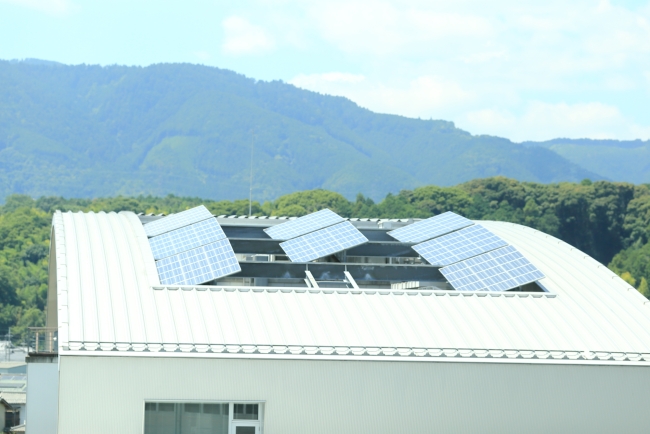
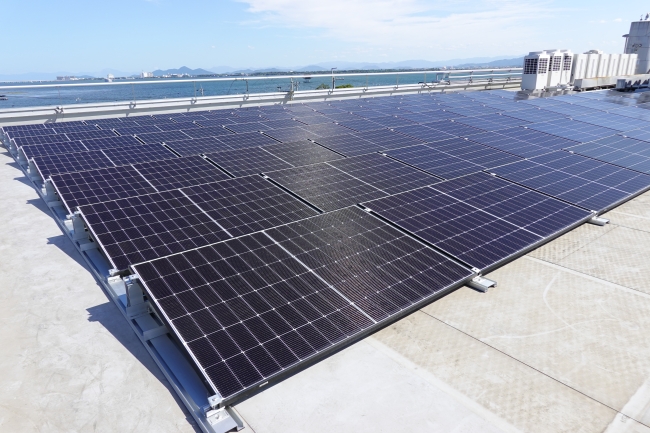
CDP’s Climate Change Questionnaire
CDP is an international non-governmental organization headquartered in London that collects and analyzes information on the environmental activities of the world’s leading companies and scores their efforts on an eight-point scale: A, A-, B, B-, C, C-, D, D-. (F score: Did not submit response)
Optex also responded to the CDP climate change questionnaire and received a "B" rating in 2022 and a leadership level "A-" rating in 2023.

Calculation of contributed reduction
• For energy losses due to opening doors unnecessarily, we calculated them based on the basic model from “CEN/TR 16676:2014 - Energy losses by industrial door.” Only the following items are calculated based on our in-house standards.
Duration of air-conditioner use: Half that of the model (243 days) = 121.5 days
Door dimensions: We selected “Pedestrian S2” for the size classification—this is equivalent to the size of double sliding doors in Japan.
Building size: We set the building size at 300 m3, based on a typical convenience store with an average area of 110 m2 and a ceiling height of 2.7 m.
Open cycle: The safety guidebook for automatic doors states that the opening speed should be 500 mm/s or more, the closing speed should be 350 mm/s or more, and the hold-open time should be 1 to 5 seconds. Assuming a double sliding door with an opening of 2 meters, we set the opening time at 2 seconds, the closing time at 3 seconds, and the hold-open time at 8 seconds with a median of 3 seconds.
• For sensor lights, we calculated the CO2 emissions from the product of a conventional light source equivalent to the brightness of our LED lighting products (e.g., 80 W mercury lamp), the power consumption, the operating hours per day (12 hours, used only at night), and the CO2 conversion factor per kWh.
• For security sensors, we compared the power consumption with that of the same model’s power-driven type. We calculated the baseline CO2 amount by adding the product of the CO2 conversion factor per kWh to the product of general wiring (50 g/m), the wiring distance (10 m) and the CO2 conversion factor per kilogram of wiring.
